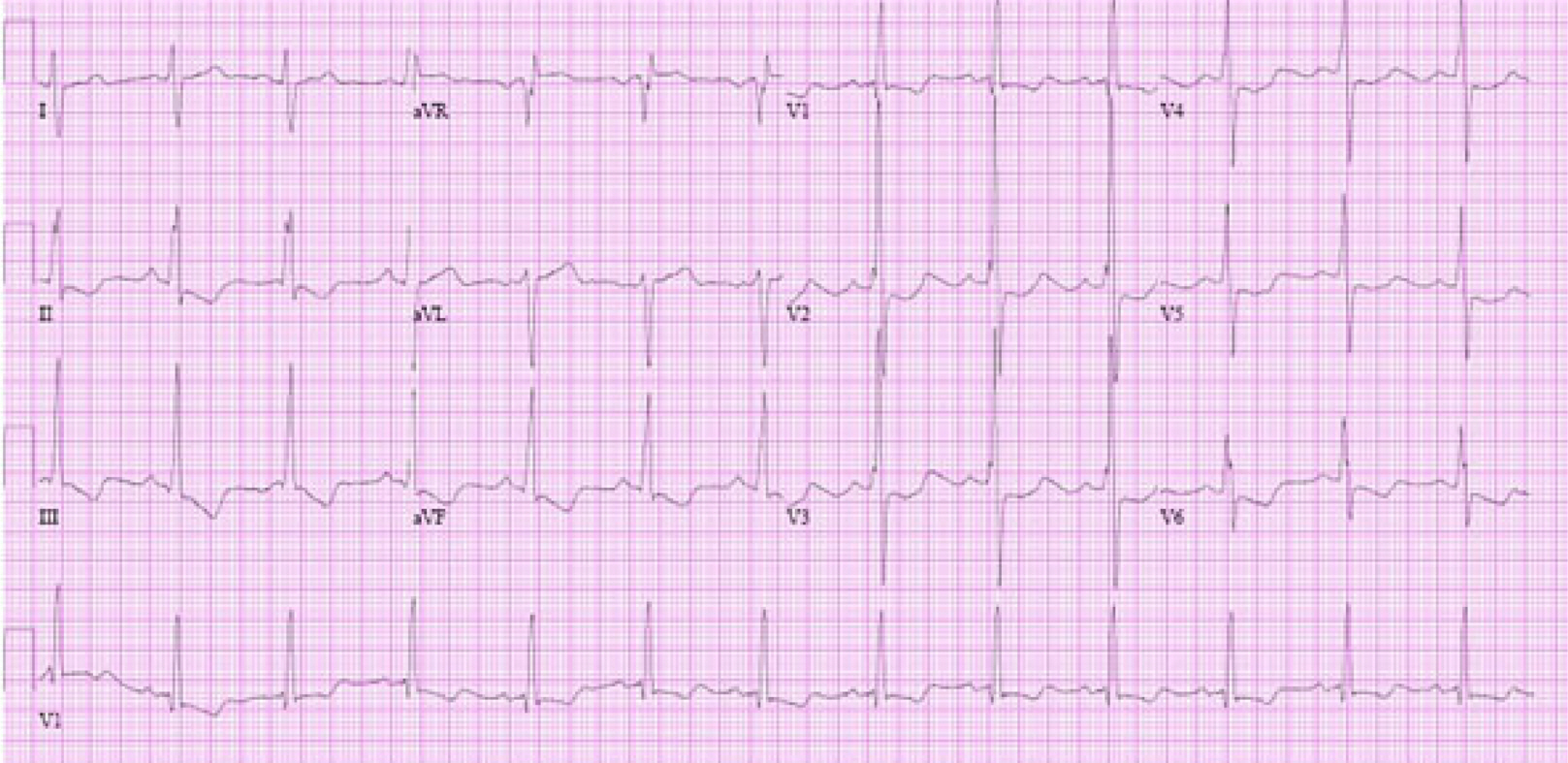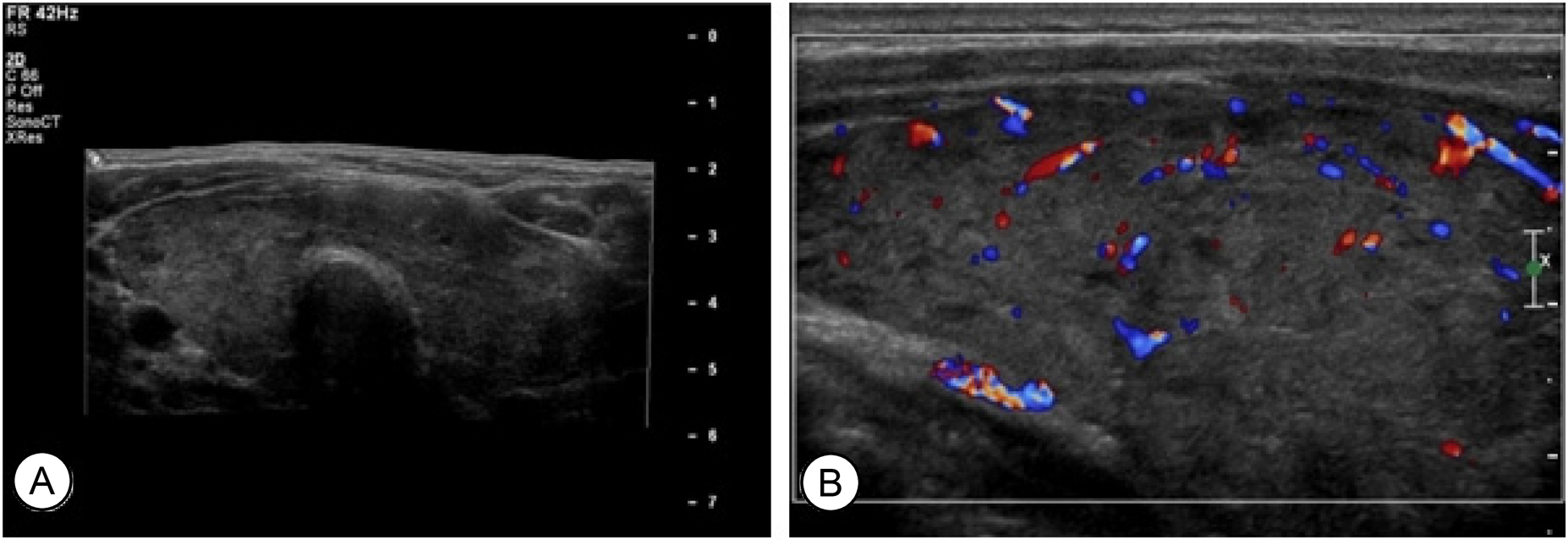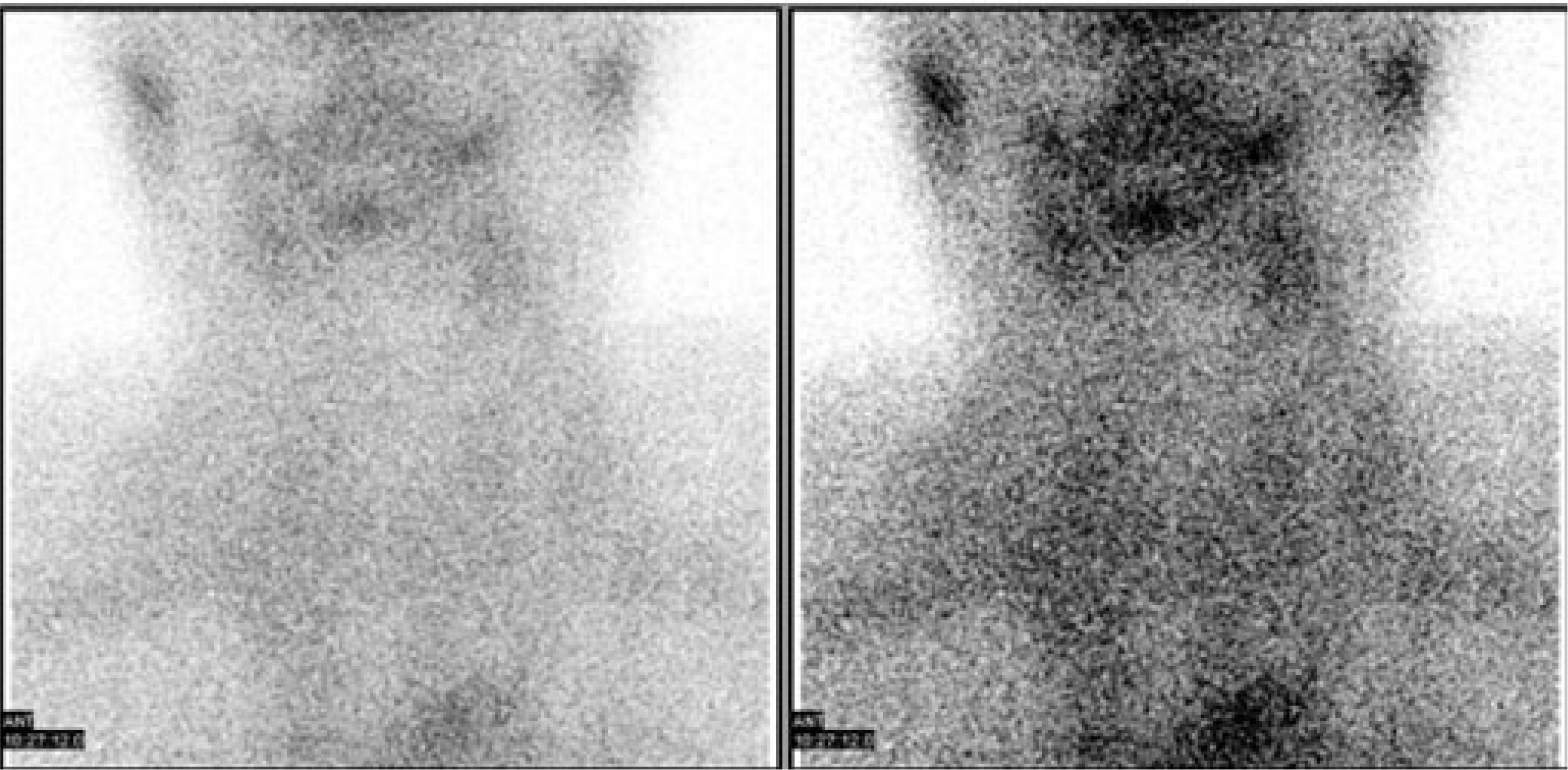Kosin Med J.
2013 Dec;28(2):171-176. 10.7180/kmj.2013.28.2.171.
A Case of Pulmonary Hypertension Recurred by Graves' Disease
- Affiliations
-
- 1Department of Internal Medicine, College of Medicine, Kosin University, Busan, Korea. yschoi@ns.kosinmed.or.kr
- KMID: 1993577
- DOI: http://doi.org/10.7180/kmj.2013.28.2.171
Abstract
- A few cases of severe pulmonary hypertension with right heart failure associated with Graves' disease were reported in the literature. However, cases of pulmonary hypertension with right heart failure recurred by Graves' disease is very rare. We describe the case of a 60-year old woman who had been treated pulmonary hypertension caused by right pulmonary artery thromboembolism seven years ago. Recently, her pulmonary hypertension with right heart failure was recurred by Graves' disease. The patient's symptoms of pulmonary hypertension was resolved after treatment of Graves' disease.
MeSH Terms
Figure
Reference
-
1.Galiè N., Hoeper MM., Humbert M., Torbicki A., Vachiery JL., Barbera JA, et al. Guidelines for the diagnosis and treatment of pulmonary hypertension. Eur Heart J. 2009. 30:2493–537.2.Simonneau G., Robbins IM., Beghetti M., Channick RN., Delcroix M., Denton CP, et al. Updated clinical classification of pulmonary hypertension. J Am Coll Cardiol. 2009. 54:S43–54.
Article3.Yoon HJ., Jin SW., Jung SJ., Jang SH., Lee JM., Kim JH, et al. A case of hyperthyroidism as a cause of pulmonary hypertension. Korean J Med. 2003. 65:S773–6.4.Choi BH., Eom YS., Kim SH., Choi HS., Chung WJ., Lee SH. A case of ascites and extensive abdominal distension caused by reversible pulmonary arterial hypertension associated with Graves'disease. Endocrinol Metab. 2011. 26:248–52.5.Klein I., Ojamaa K. Thyroid hormone and the cardiovascular system. N Engl J Med. 2001. 344:501–9.
Article6.Chu JW., Kao PN., Faul JL., Doyle RL. High prevalence of autoimmune thyroid disease in pulmonary arterial hypertension. Chest. 2002. 122:1668–73.
Article7.Suk JH., Cho KI., Lee SH., Lee HG., Kim SM., Kim TI, et al. Prevalence of echocardiographic criteria for the diagnosis of pulmonary hypertension in patients with Graves' disease: before and after antithyroid treatment. J Endocrinol Invest. 2011. 34:e229–34.8.Voelkel MA., Wynne KM., Badesch DB., Groves BM., Voelkel NF. Hyperuricemia in severe pulmonary hypertension. Chest. 2000. 117:19–24.
Article9.Nagaya N., Nishikimi T., Uematsu M., Satoh T., Kyotani S., Sakamaki F, et al. Plasma brain natriuretic peptide as a prognostic indicator in patients with primary pulmonary hypertension. Circulation. 2000. 102:865–70.
Article10.Andreassen AK., Wergeland R., Simonsen S., Geiran O., Guevara C., Ueland T. N-terminal pro-B-type natriuretic peptide as an indicator of disease severity in a heterogeneous group of patients with chronic precapillary pulmonary hypertension. Am J Cardiol. 2006. 98:525–9.
Article
- Full Text Links
- Actions
-
Cited
- CITED
-
- Close
- Share
- Similar articles
-
- A Case of Ascites and Extensive Abdominal Distension Caused by Reversible Pulmonary Arterial Hypertension Associated with Graves' Disease
- Isolated Pulmonary Arterial Hypertension-Janus' Faces of Hyperthyroidism
- A Case of Pulmonary Arterial Hypertension Associated With Hyperthyroidism, Persistent After Euthyroidism Was Obtained
- The Change of Pulmonary Artery Pressure in Graves'Disease Before and After Treatment
- A Case of an Elderly Graves’ Patient with Fatal Pulmonary Embolism






